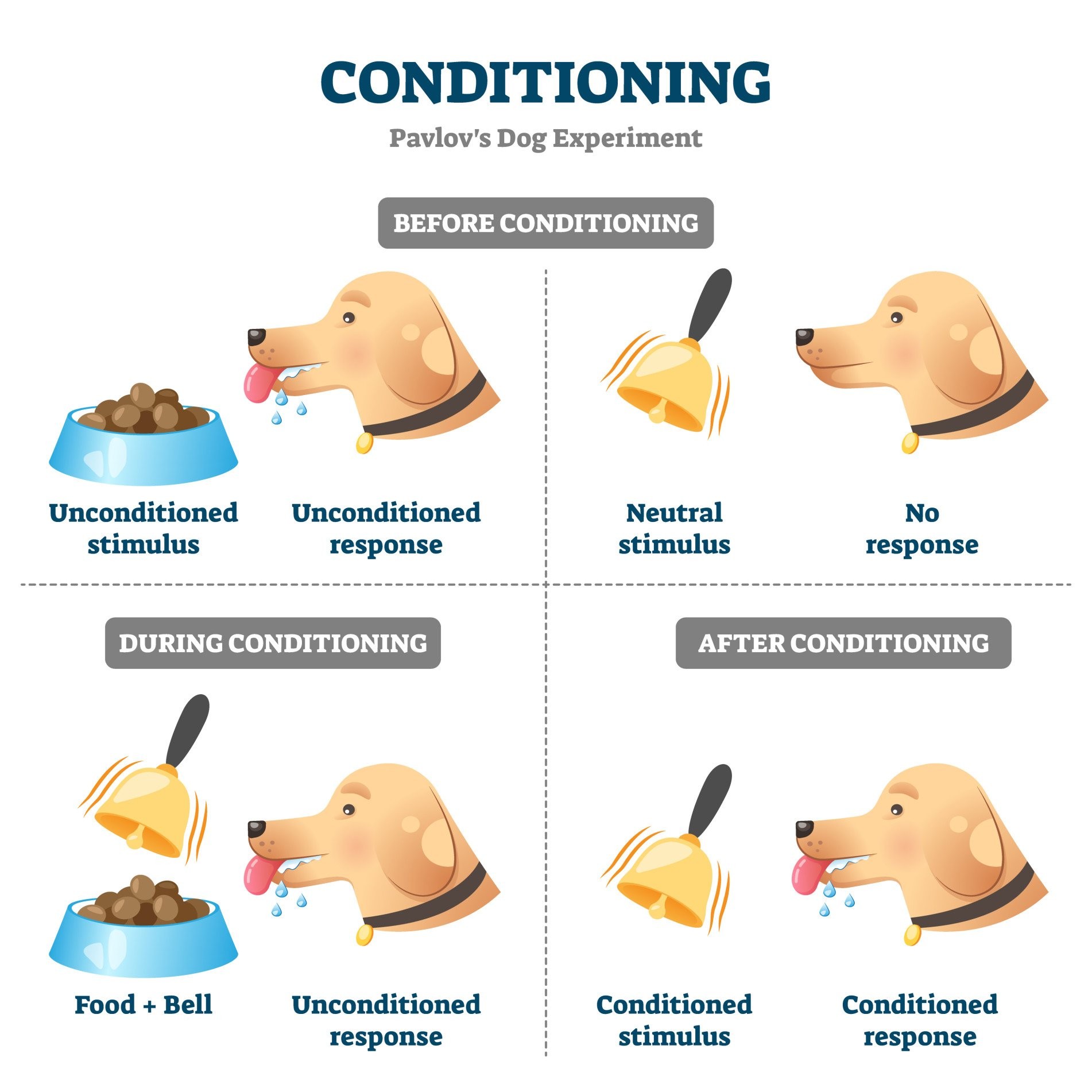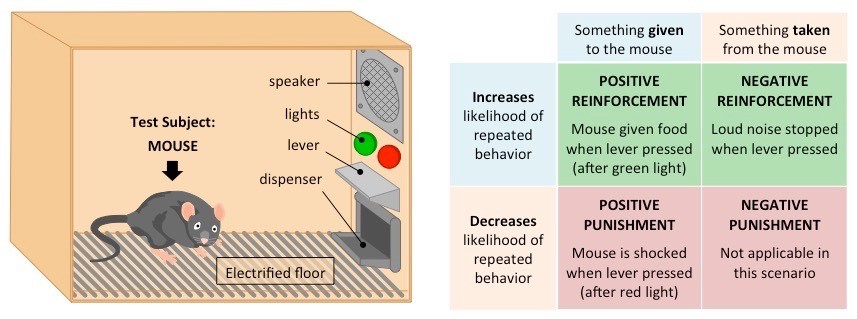CANINE CORNER WITH REBECCA HAWKINS
A Dog's Mind
There is no question that through genetic manipulation, we can modify the dogs mind. We can increase friendliness, stamina, courage. We can create dogs for hunting, guarding racing etc. But there is still so much of the dogs mind that has its origins in the ancestral gene pool. No matter how much we manipulate the dog in a genetic level, it will be limited to its inherited repertoire from the wolf. Dogs have various ways of learning and are in a constant state of acquiring knowledge throughout their lives, shaped by their interactions with humans, other animals, and their environment. The more we comprehend the learning processes of dogs, the better we can understand the impact of our interactions, our reactions to their behaviours, and our methods of communication. This understanding ensures that dogs grasp the lessons we want them to learn about us and their surroundings.

Classical Conditioning - Classical conditioning involves dogs learning through associations, linking two or more stimuli that occur close together in time. This learning can be described as automatic and involuntary responses, where the dog reacts without conscious thought.

The most famous example of this was discovered by the Russian scientist Pavlov. He discovered through an experiment that dogs would salivate upon hearing a bell which was consistently rung before meals.
This learning method is based on one stimulus consistently predicting another and
that the stimuli are closely related in time. This form of conditioning can occur without the owner’s intention or the dog’s awareness.
A dog may link the action of its owner picking up a lead with the excitement of going for a walk, displaying excitement as soon as the owner reaches for the lead. The rustle of the treat bag or opening of the fridge door if food has been associated with the sound. Another example could be a dog that feels anxious upon entering a vet clinic because it associates that environment with negative experiences, such as pain. The loud bangs of fireworks may have scared him once and so any similar sounds can cause great distress.
Operant Conditioning - Operant conditioning refers to how dogs learn based on the consequences of their actions. Operant conditioning as studies by American psychologist Edward Thorndike et al formulated the law of effect, which states that given a certain stimulus, animals repeat behavioural responses that give positive results while avoiding behaviours that produce negative results

A dog may choose not to respond opt and remain still and observe rather than act. A non-favourable outcome predicts it is less likely to repeat that behaviour in similar situations thus shaping their future behaviours. Each dog determines whether the outcome of its behaviour is reinforcing or punishing so, if an owner scolds their dog for jumping up, hoping to deter the behaviour, the dog might still find the owner's attention rewarding, regardless of the reprimand's tone, and continue to jump.
Operant conditioning is a common method in training that utilises rewards with things that your dog finds enjoyable to praise good decisions.
Examples of Conditioning in Action
Addressing Jumping Behaviour. - A dog that jumps up to greet people may be reinforced by the attention it receives, even if the owner is reprimanding it. Using operant conditioning, the owner can get the visitor to ignore the dog and encourage the dog to sit instead. By rewarding the dog with treats or praise every time it sits when someone arrives, the dog learns that sitting is more rewarding than jumping.
Reducing Fear of the Vet- A dog that becomes anxious when visiting the vet may be helped through classical conditioning. If the owner brings treats and offers praise during visits, the dog can start associating the vets with positive experiences rather than fear. Over time, the dog learns to feel more comfortable in that environment.
Reducing fear of loud noises- When a dog is anxious around loud sounds they may look to you for your response. By remaining calm yourself and not reacting (by trying to calm the dog) he will eventually realise there is nothing to fear. Adding a tasty treat to event he will learn that reward comes from remaining calm.
Encouraging Calmness During Grooming-
If a dog is anxious about grooming, operant conditioning can help. By rewarding the dog with treats and praise for remaining calm during grooming sessions, the owner reinforces the desired behaviour. Eventually, the dog learns that calmness leads to positive outcomes.
Encourage recall success- A dog that ignores recall commands can benefit from operant conditioning. By rewarding the dog with high-value treats when it comes back on command, the owner reinforces the behaviour. Over time, the dog learns that returning when called leads to enjoyable rewards, increasing the likelihood of compliance in the future.
By recognising what your dog enjoys can help reinforce desired behaviours, making them substantially more likely to repeat them on cue. Evidence-based training advocates recommend that every dog should be trained using reward-based methods, particularly positive reinforcement, which are supported by robust scientific evidence.